Le tour de France 1969 d’Eddy Merckx
Jef Geys
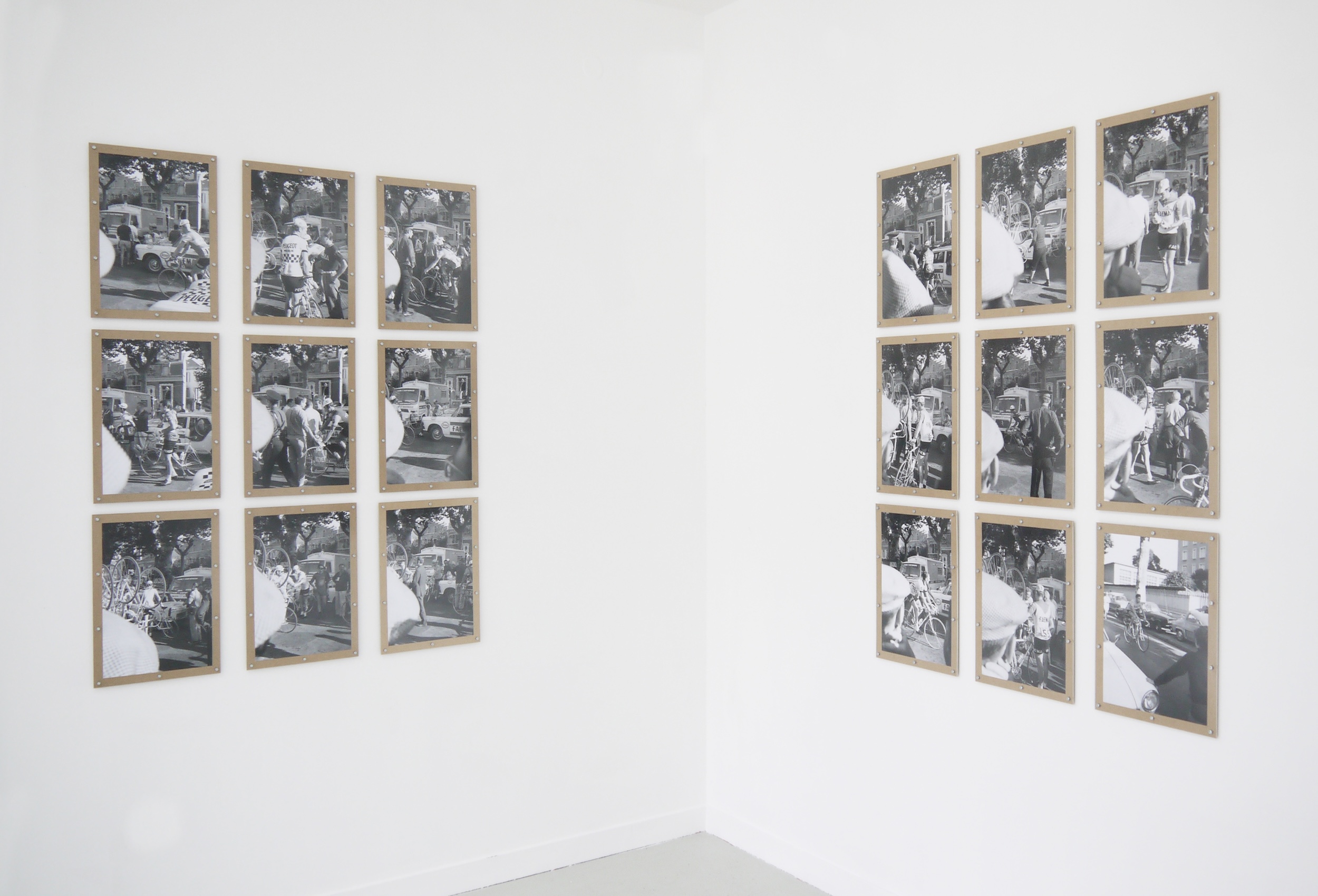
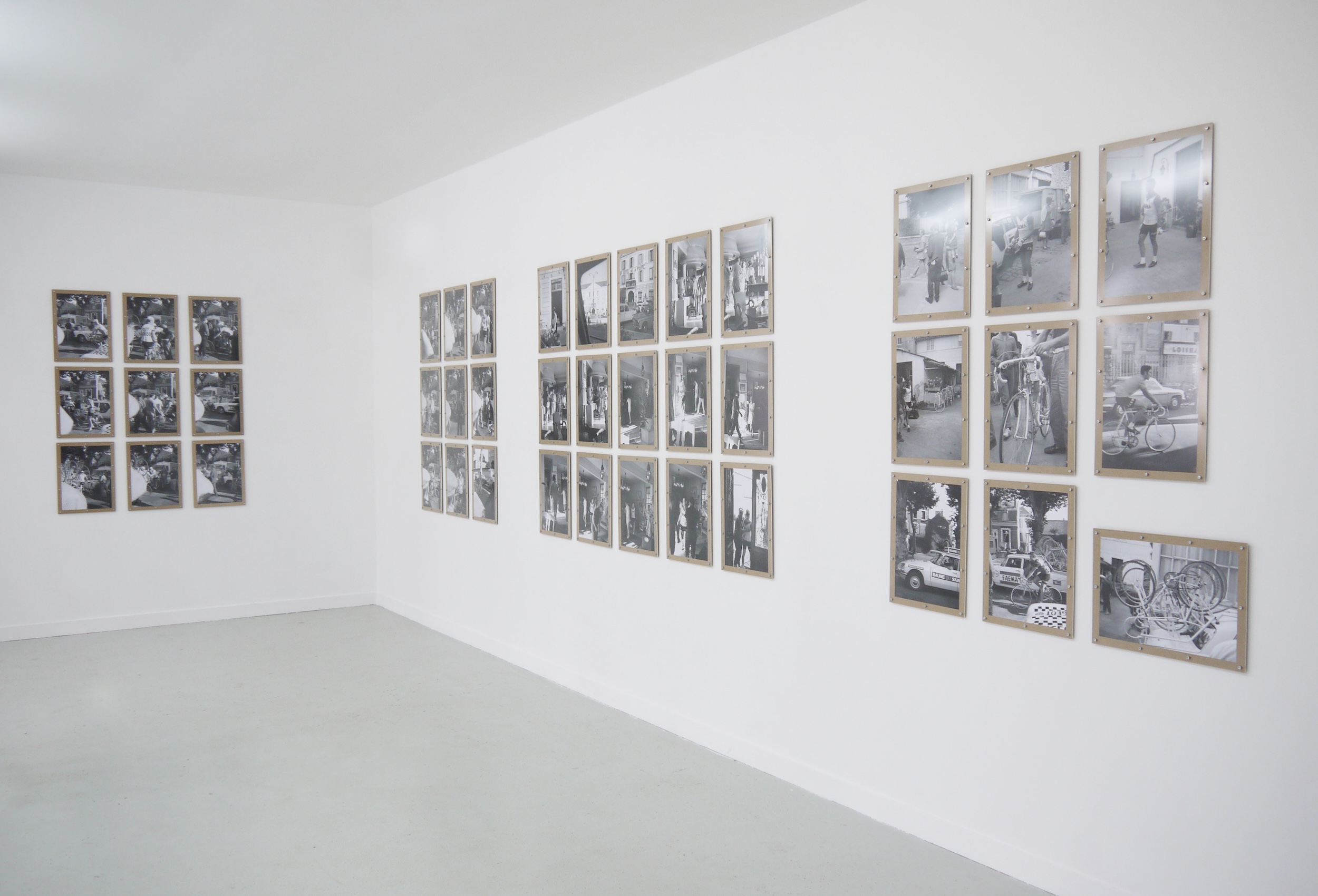
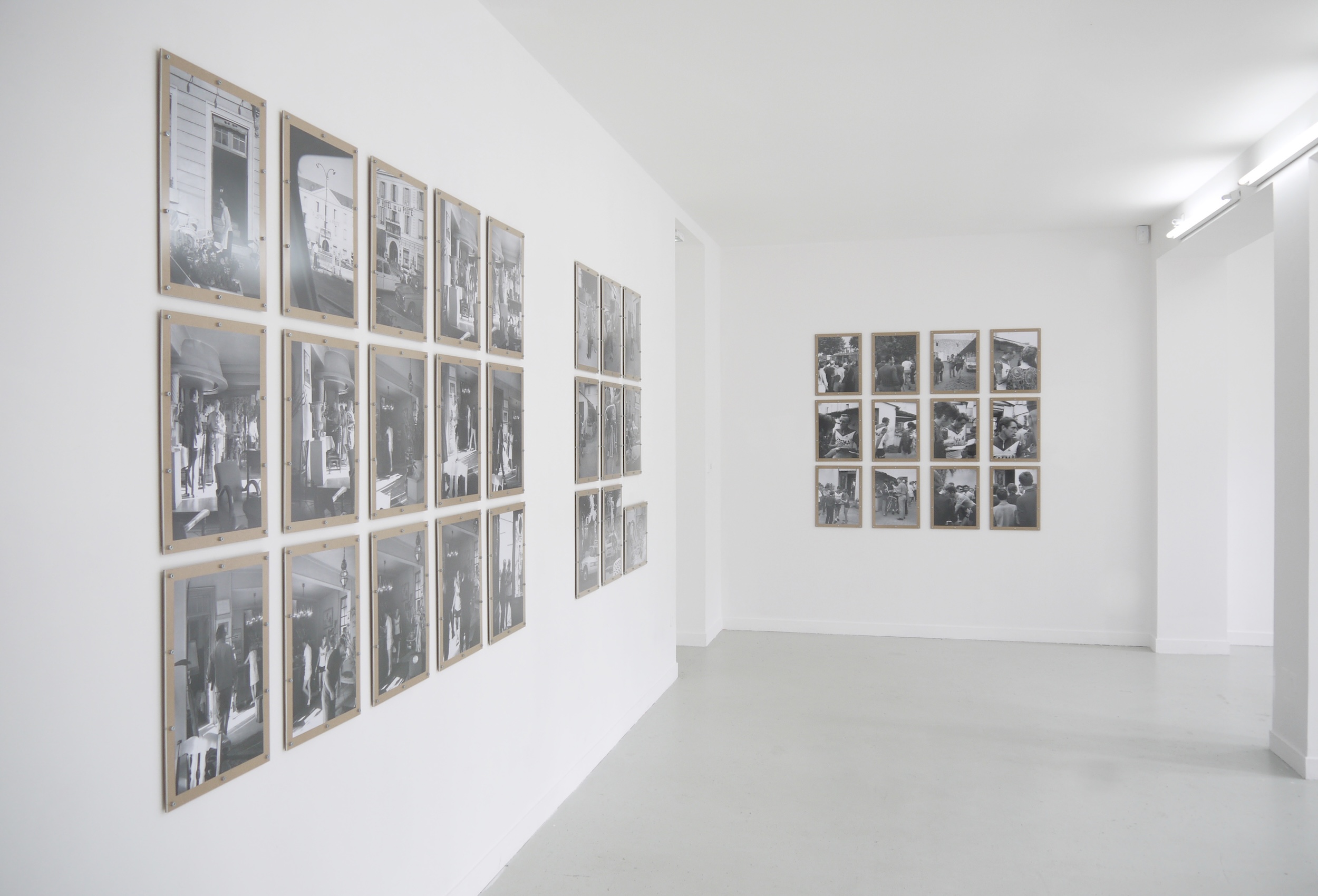
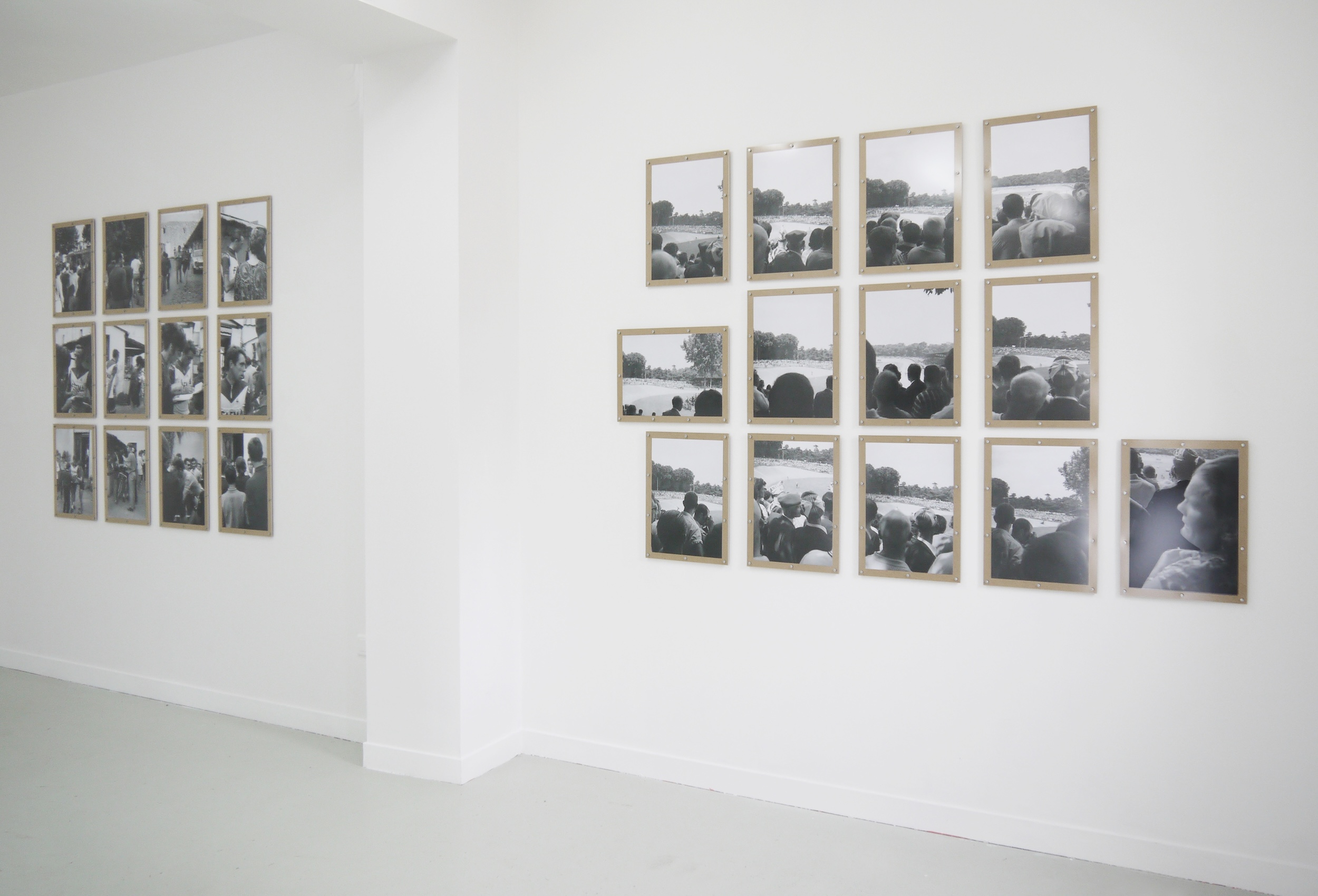
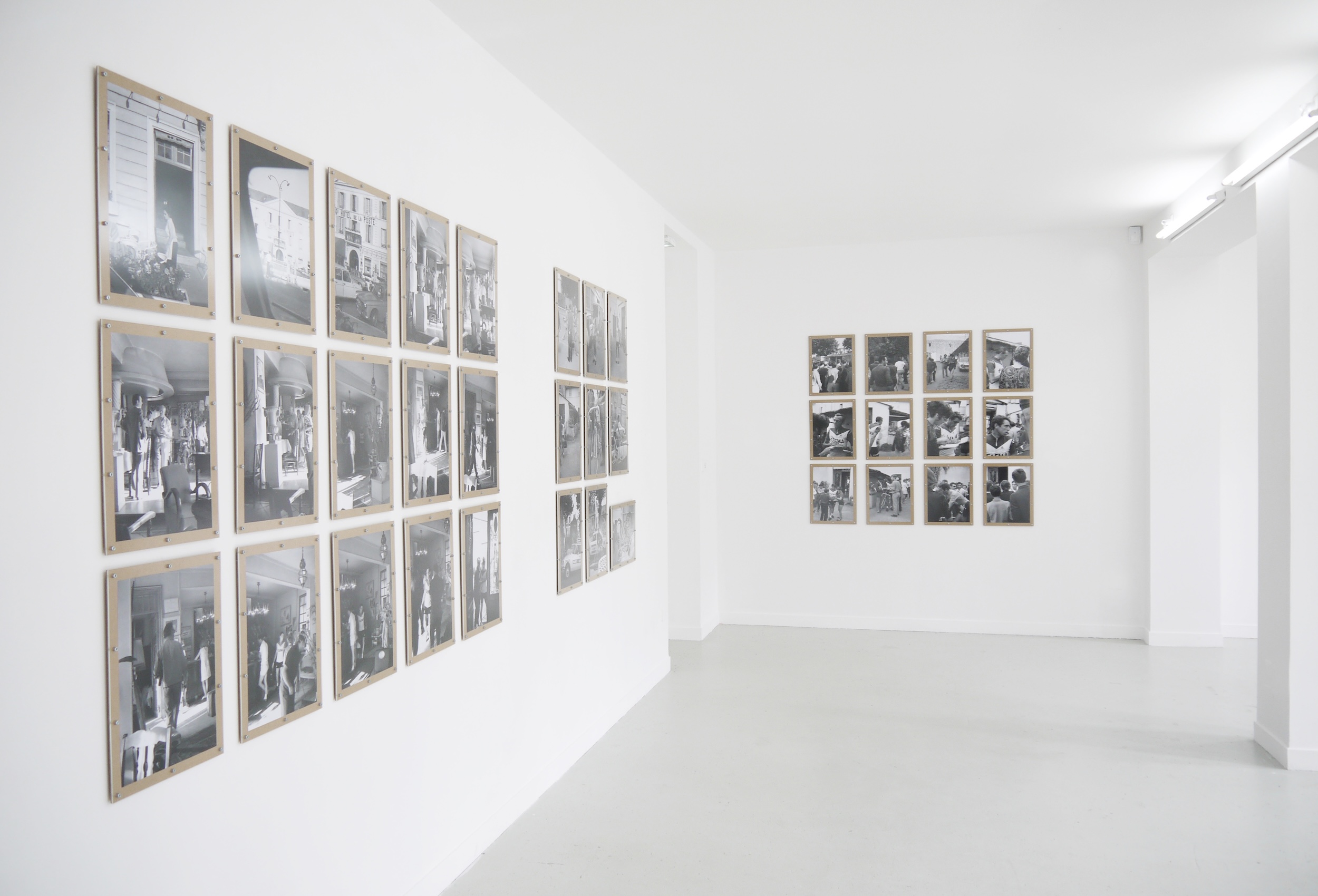
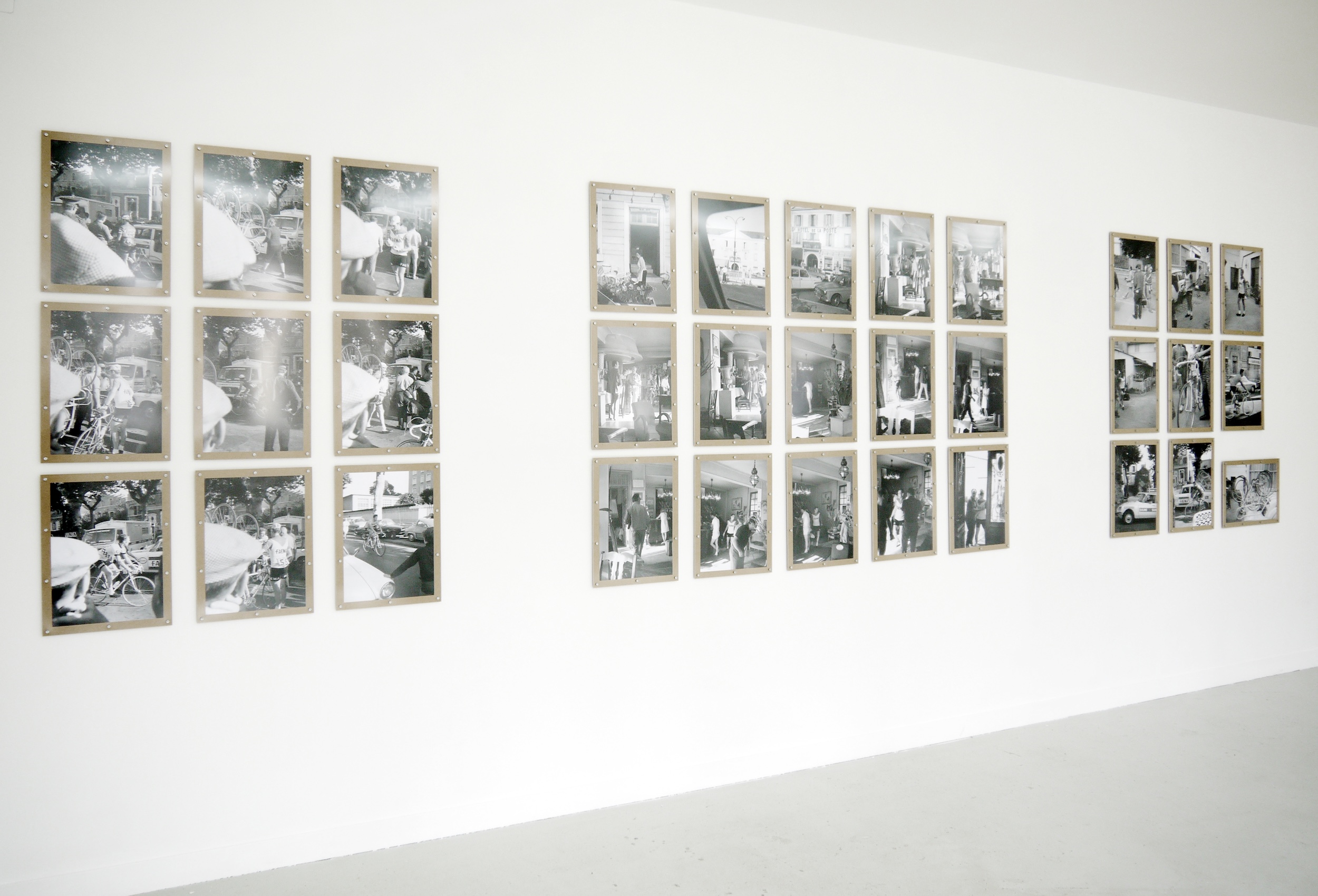
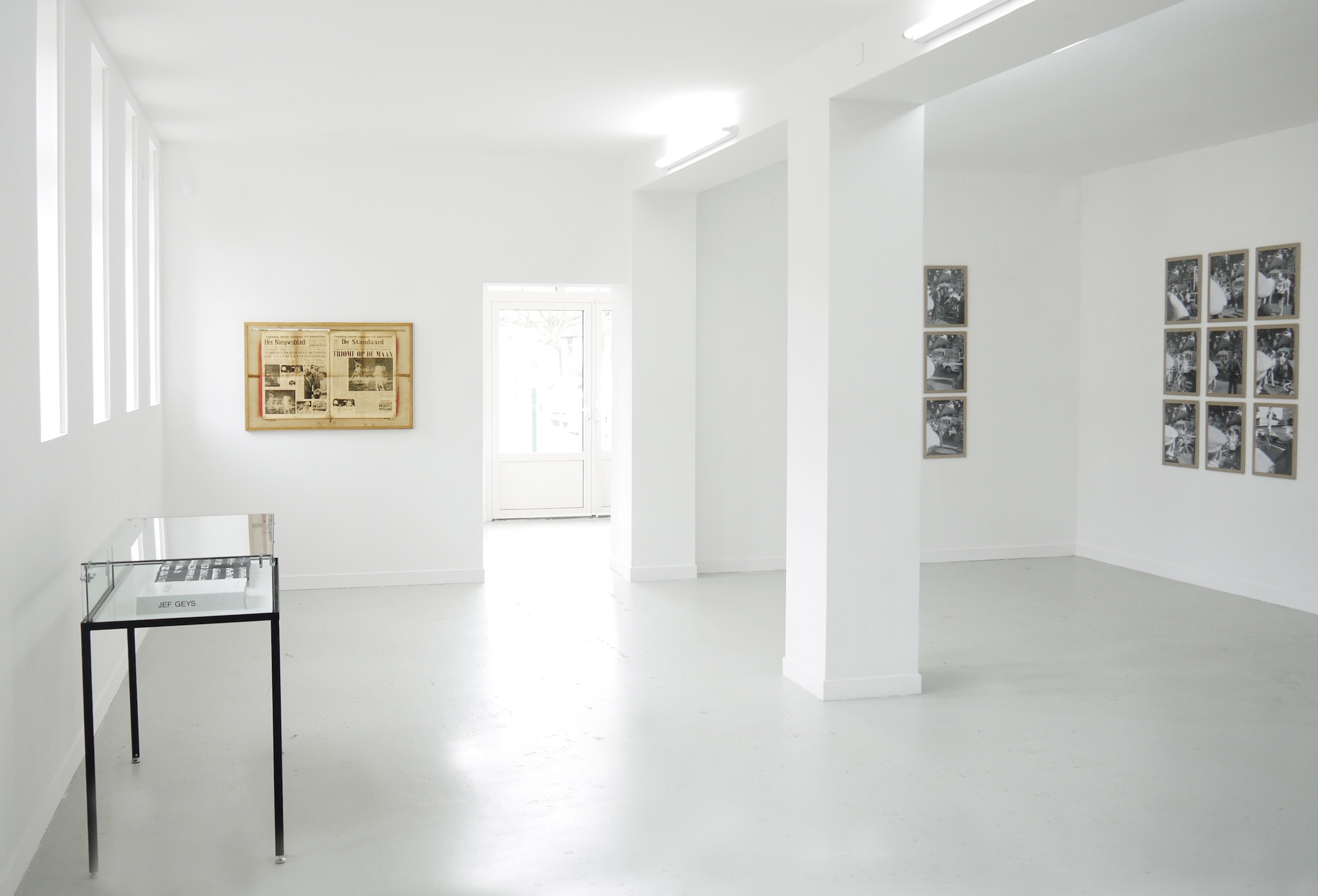
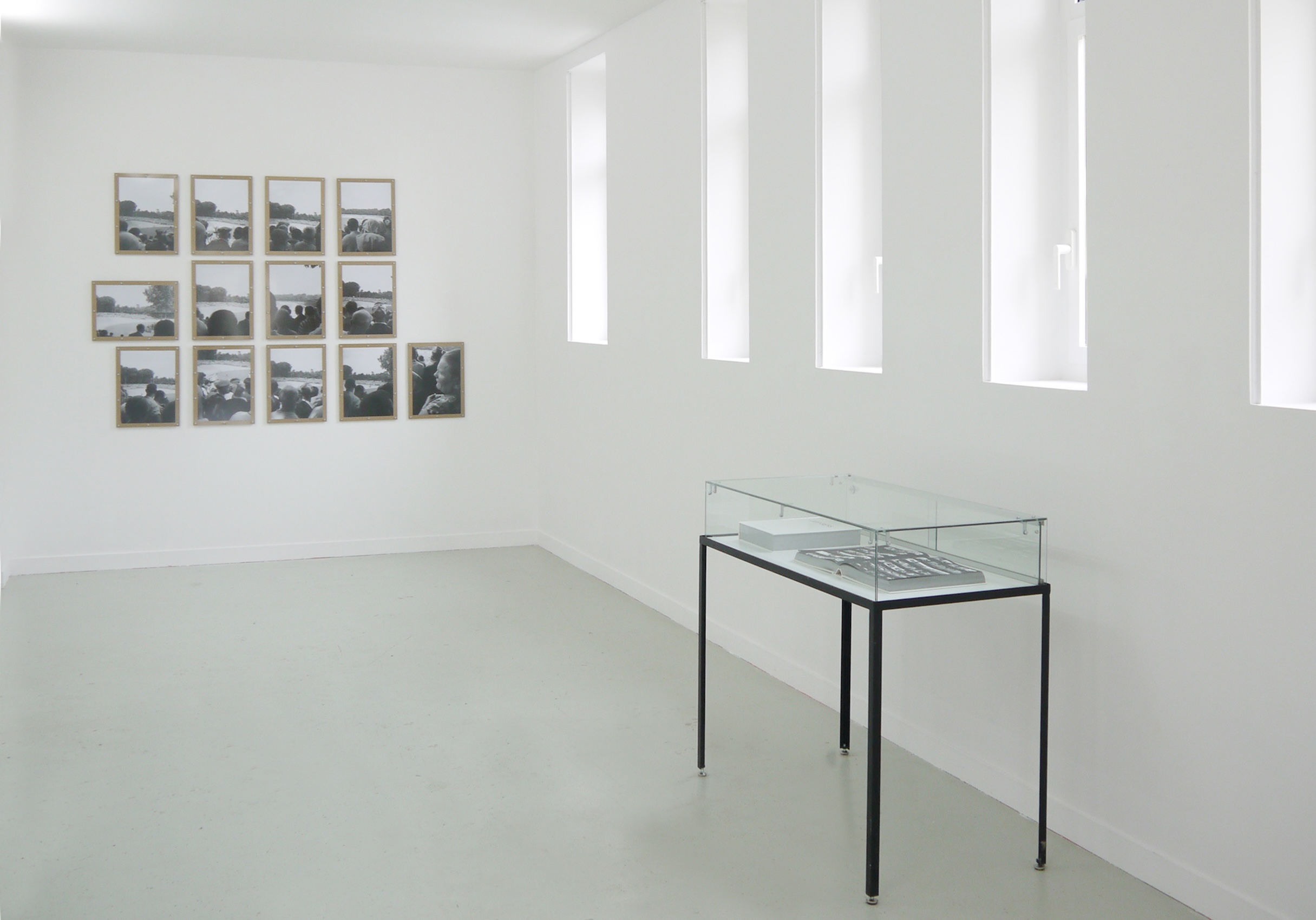
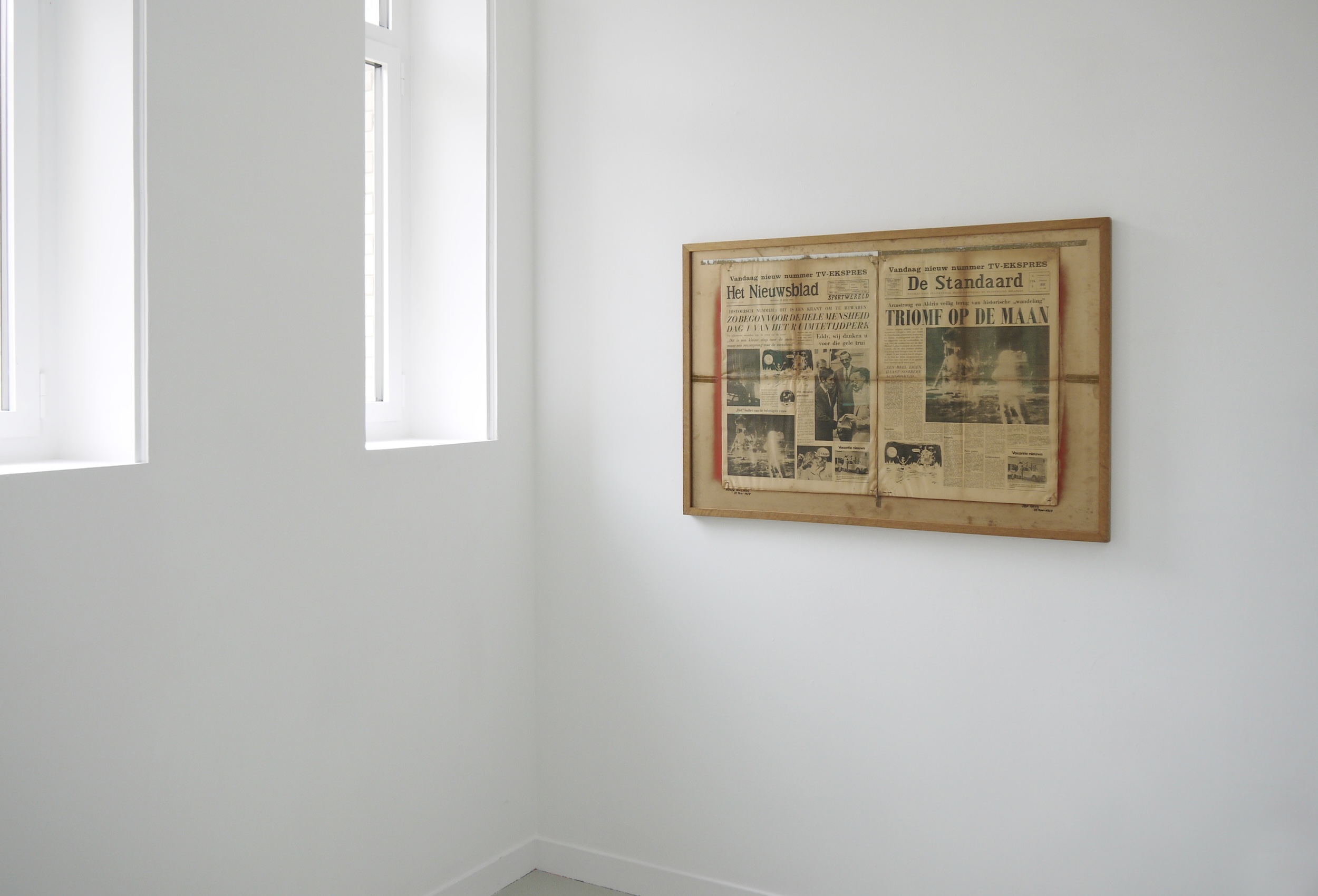
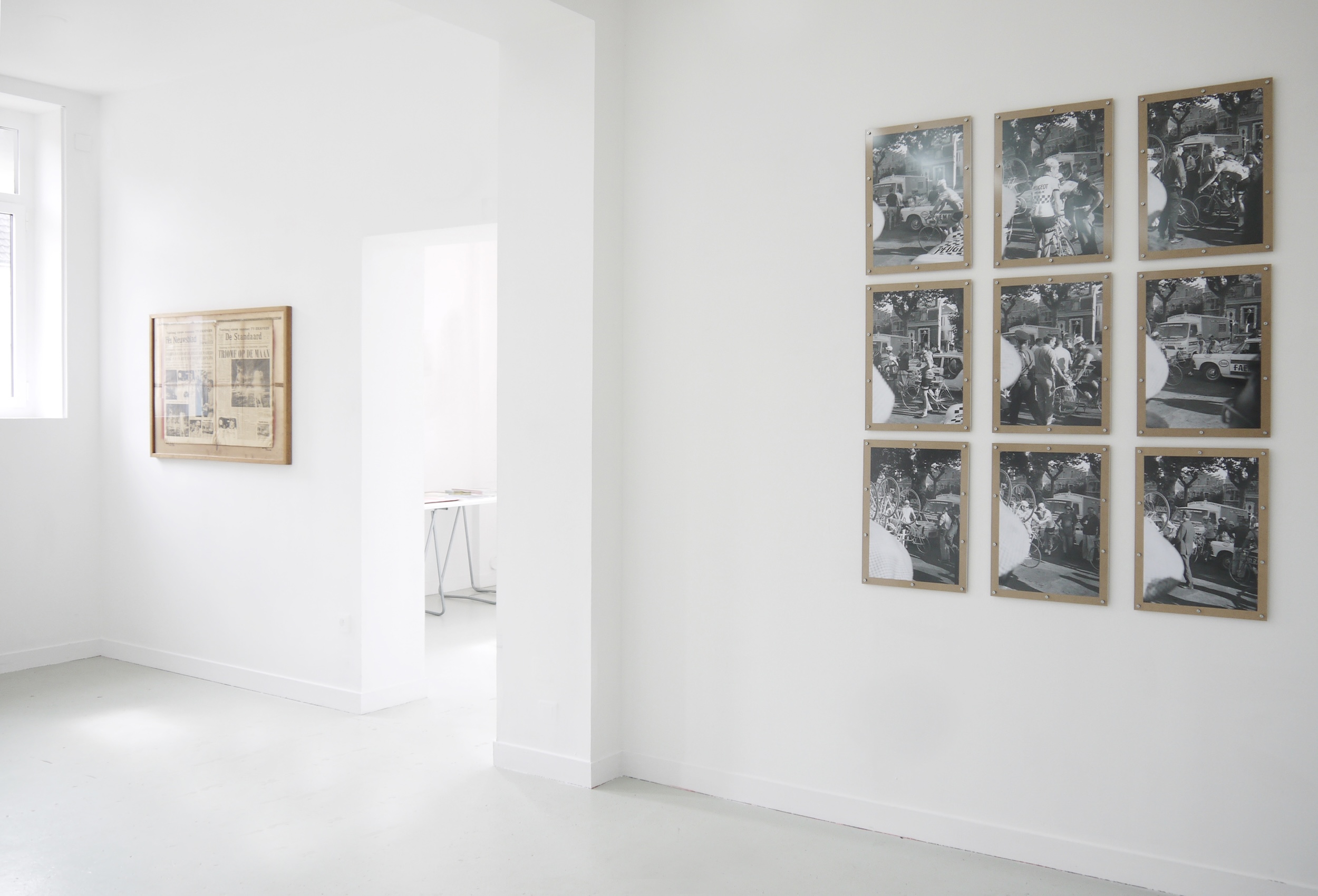
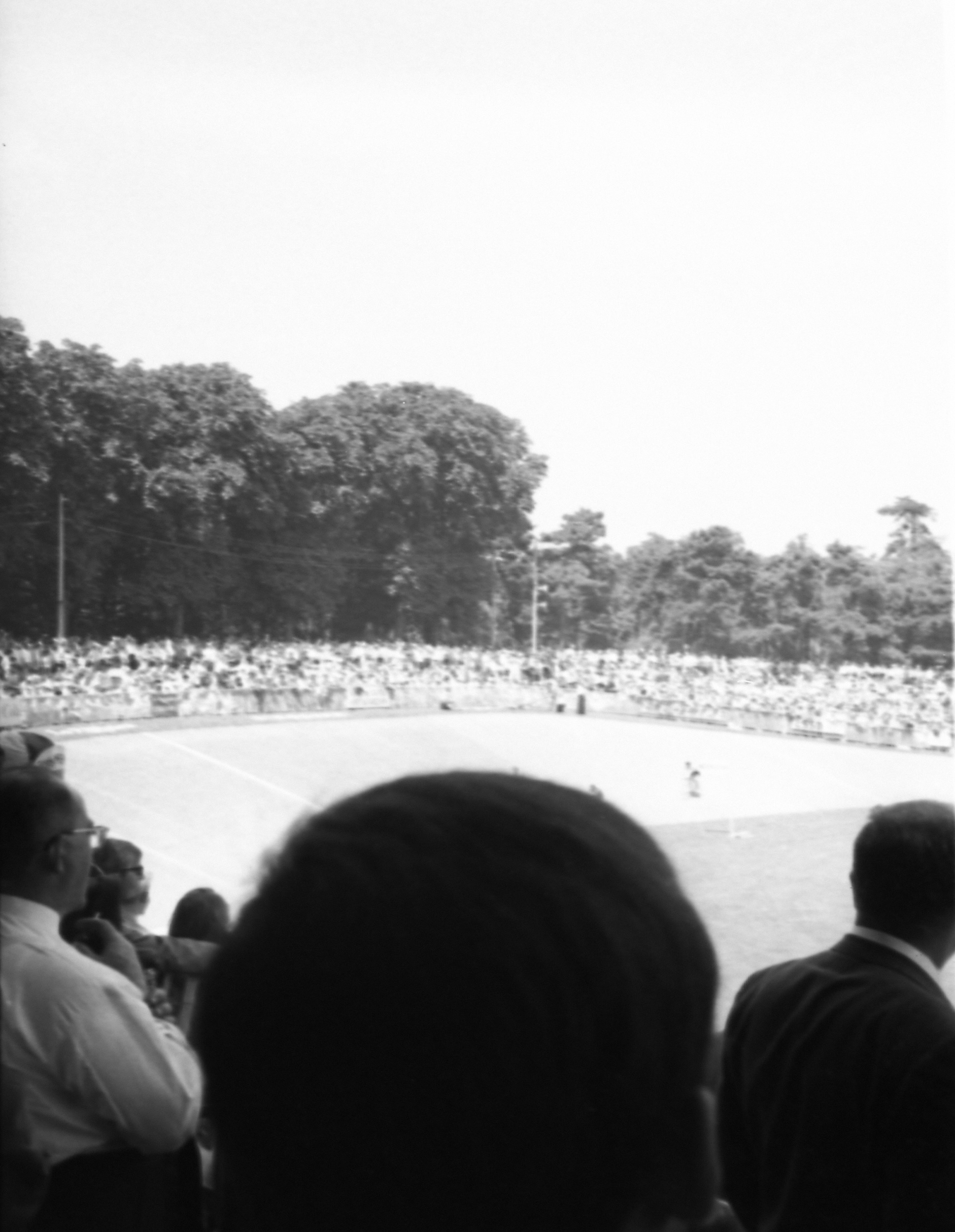
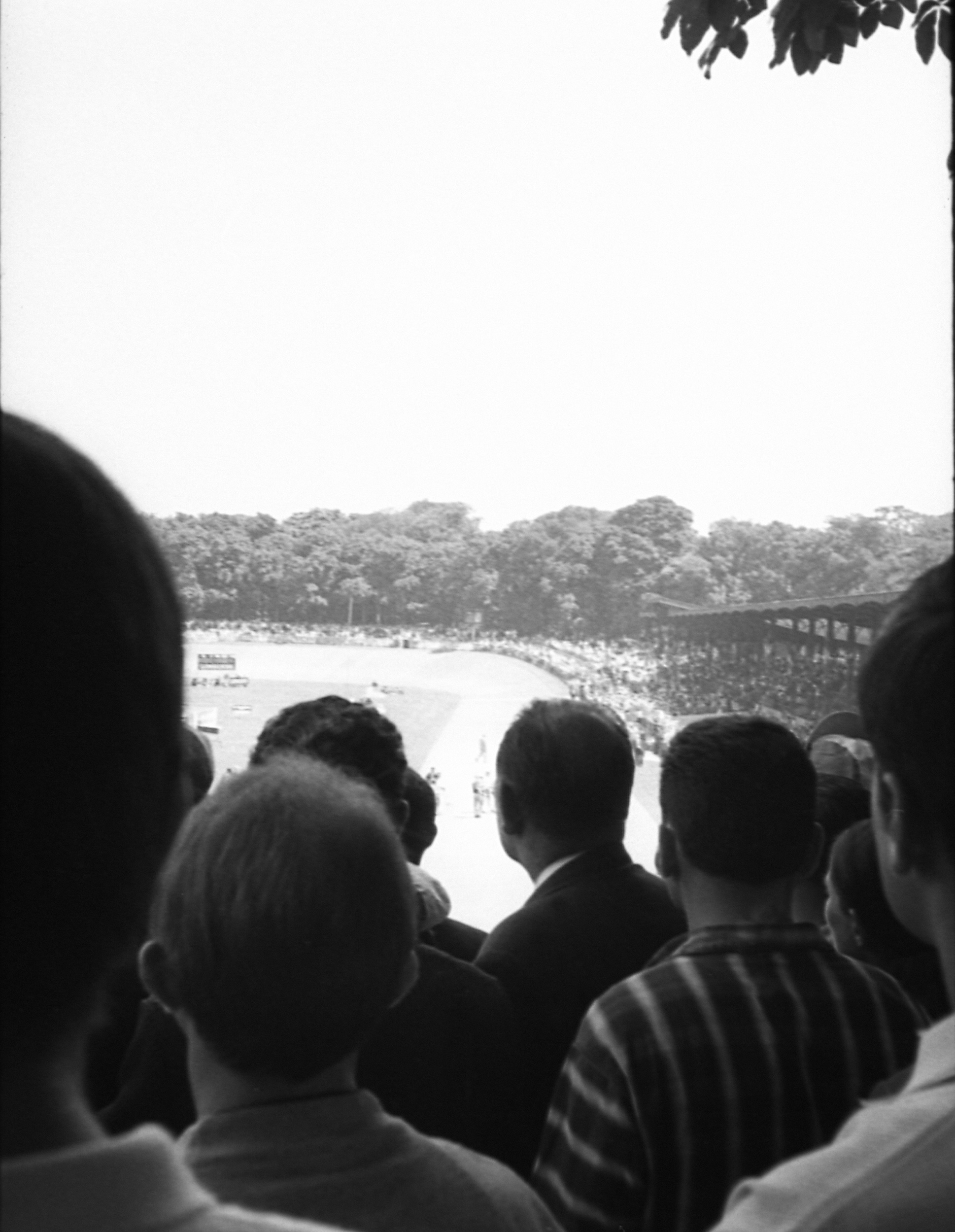
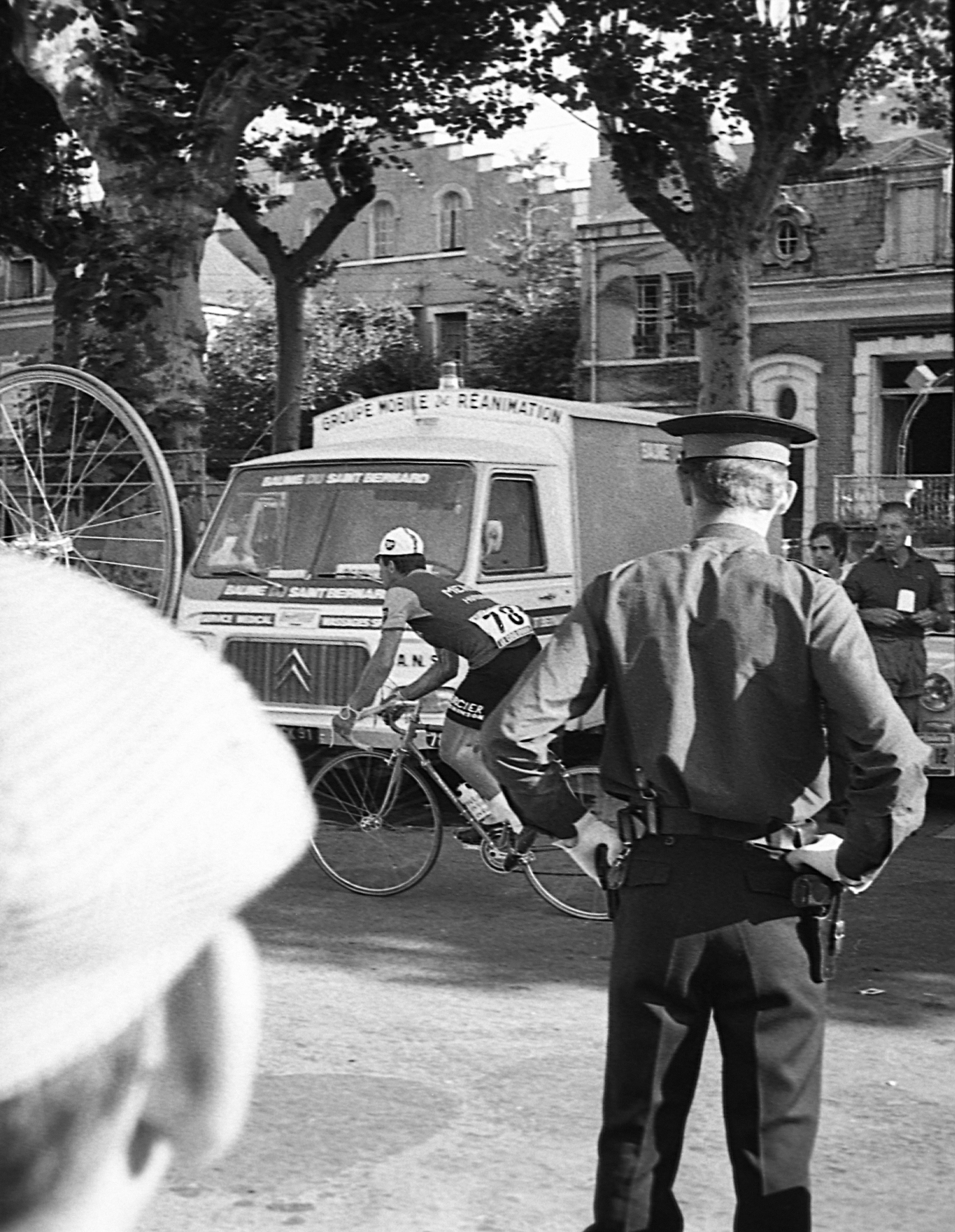
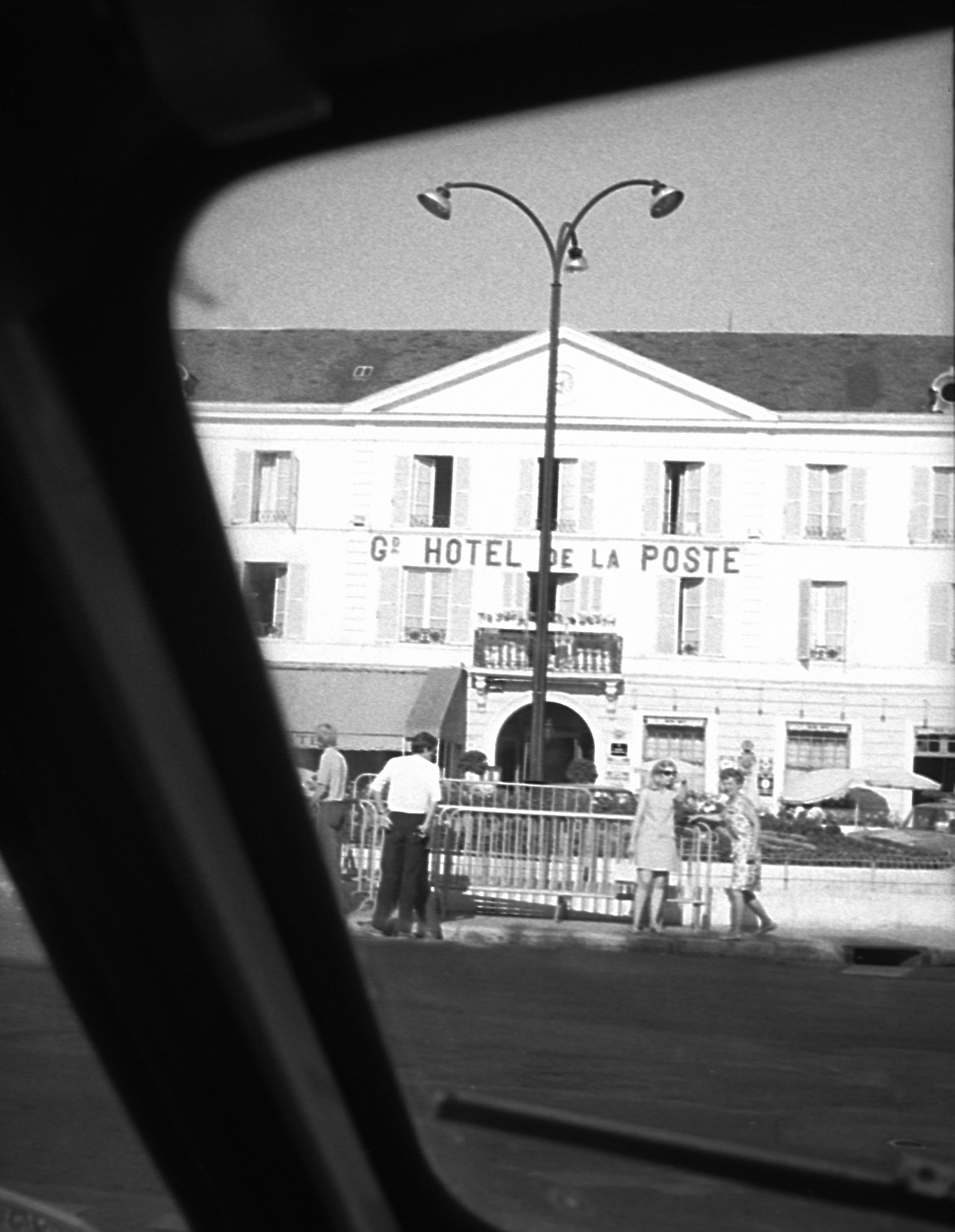
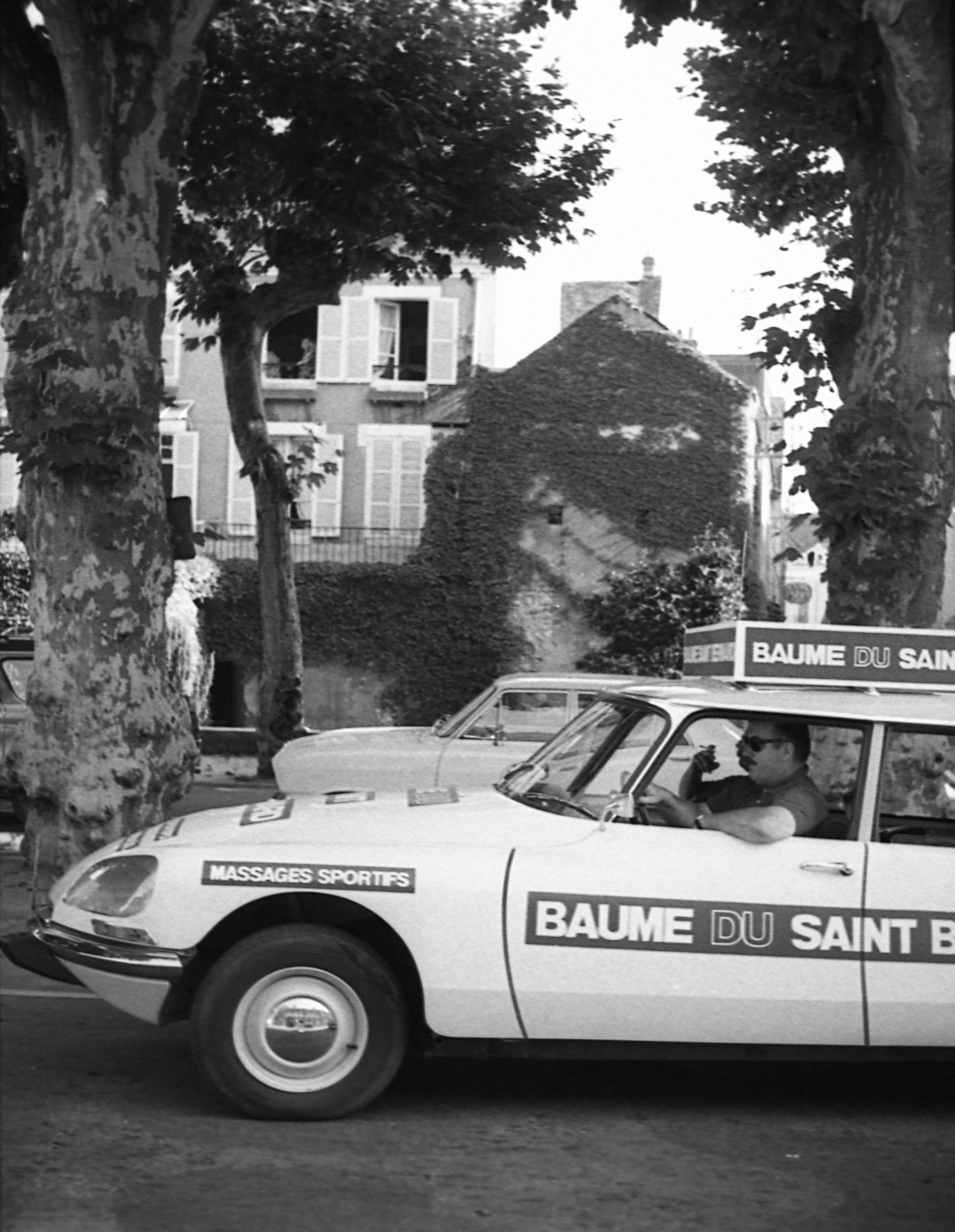
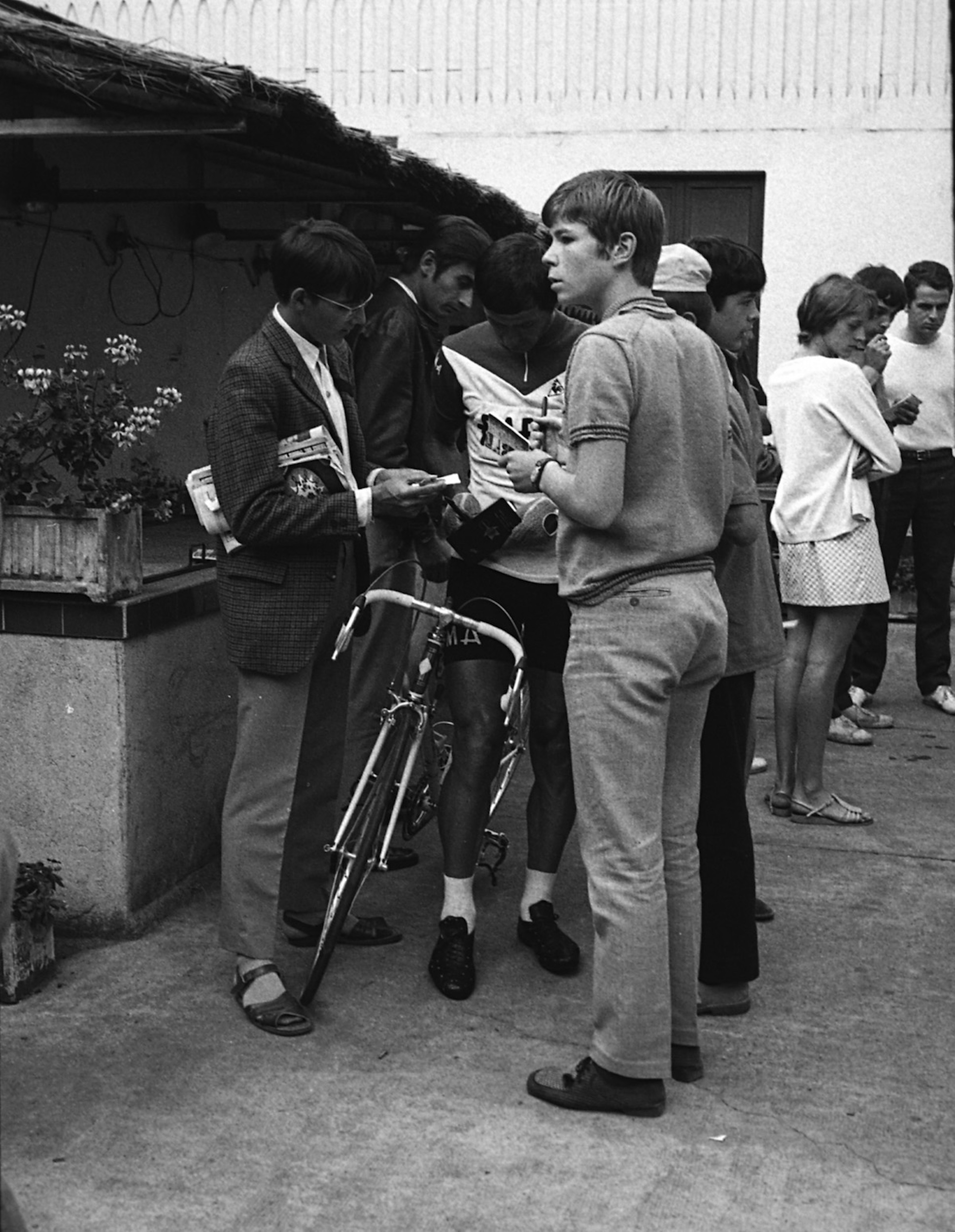
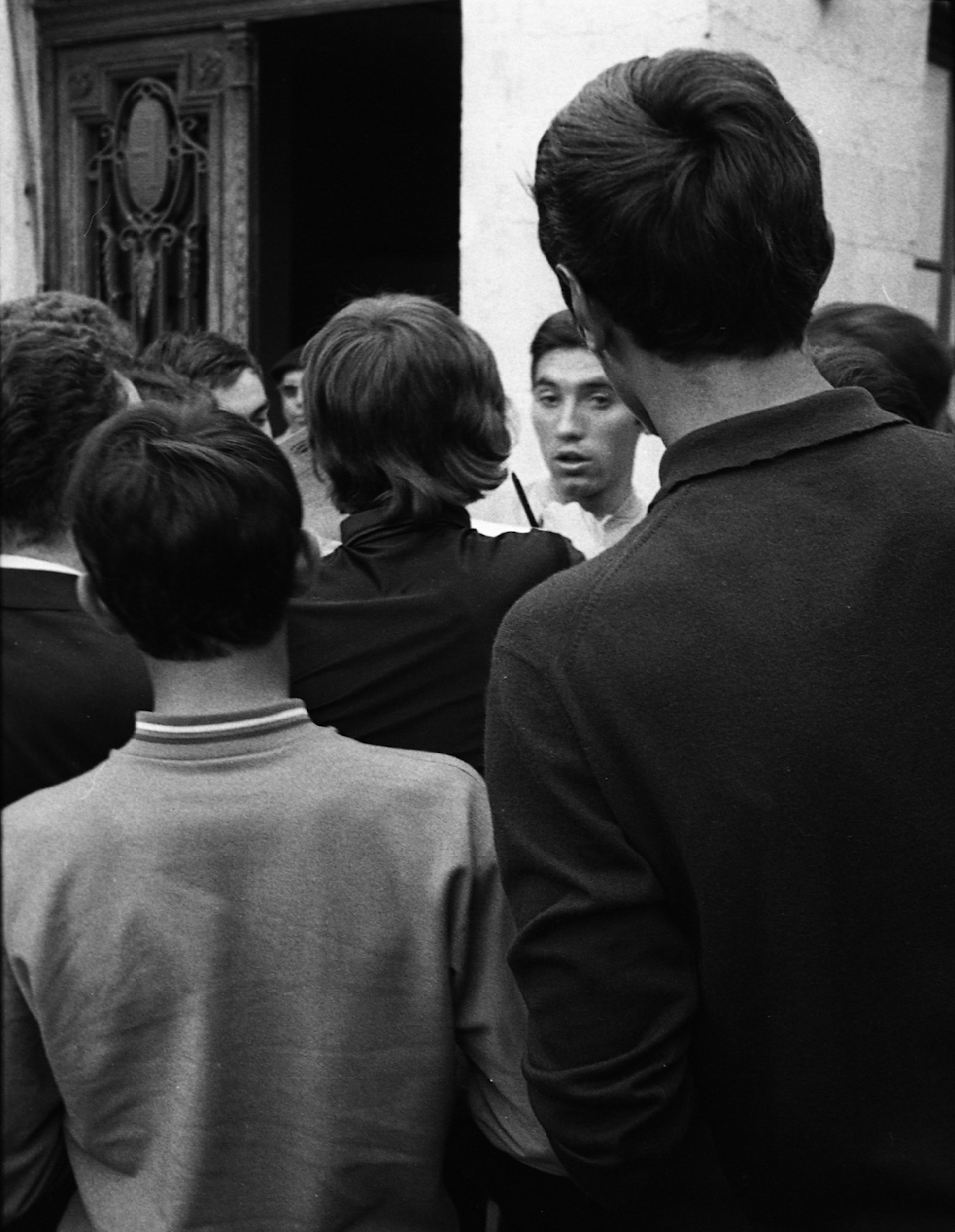
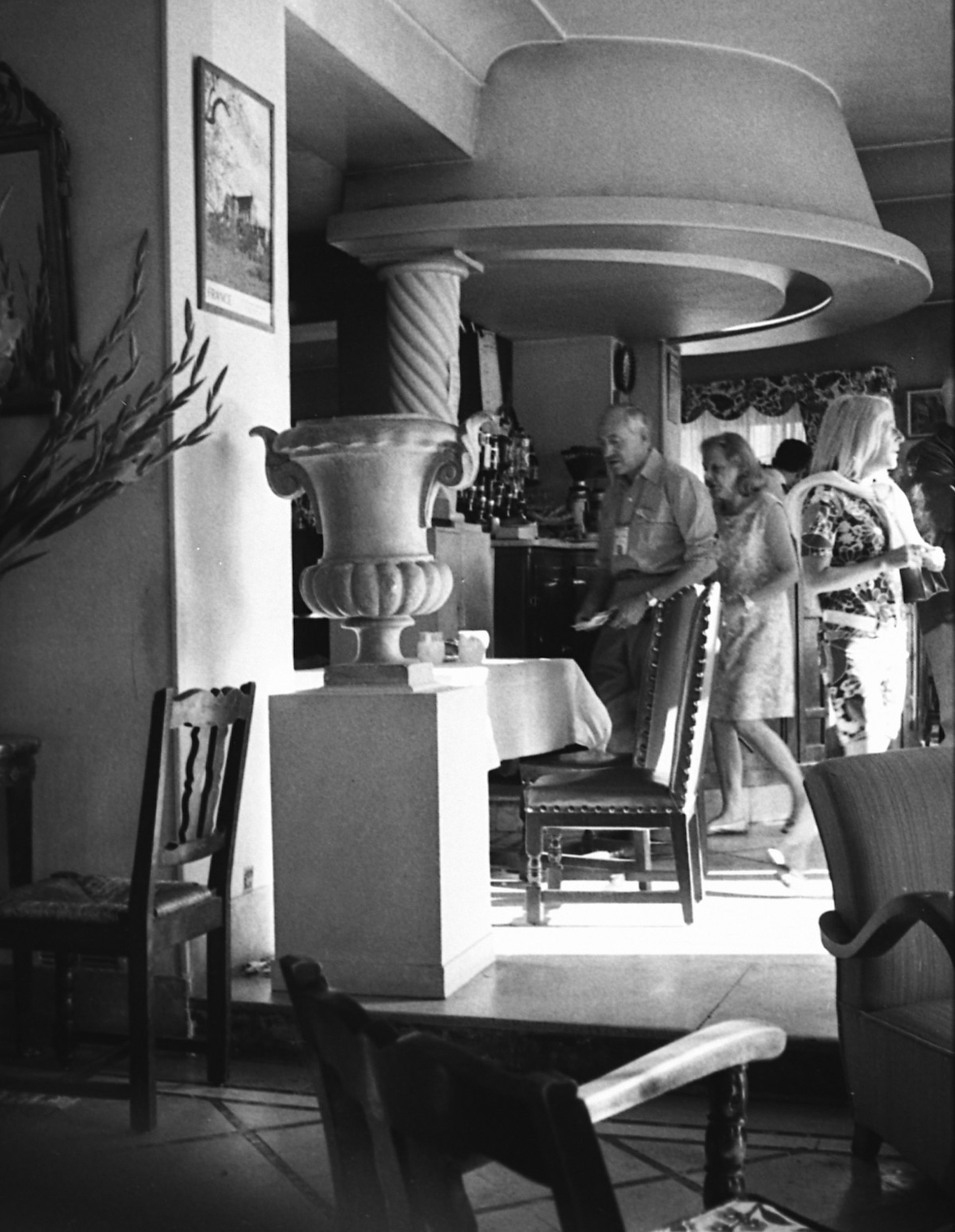
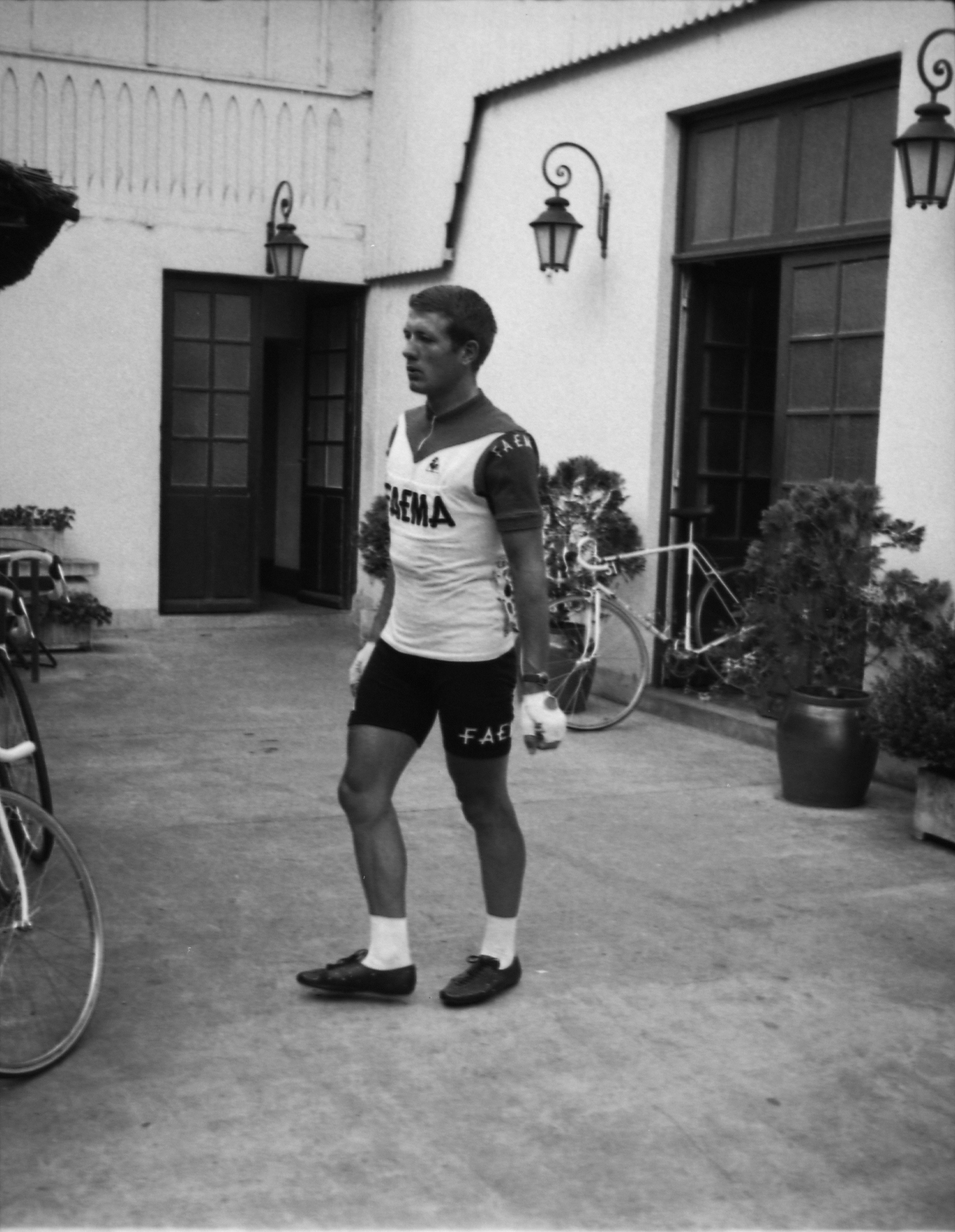
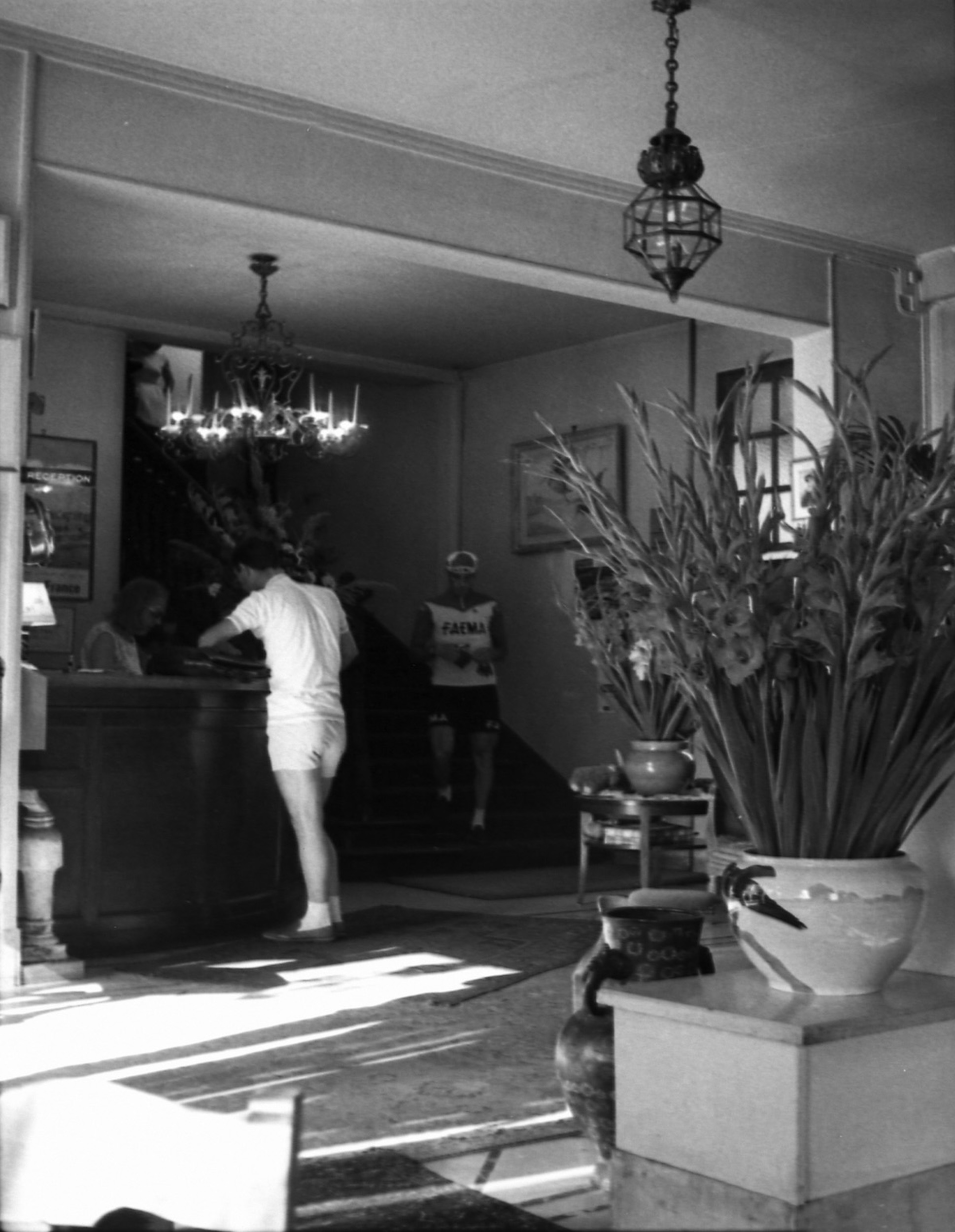
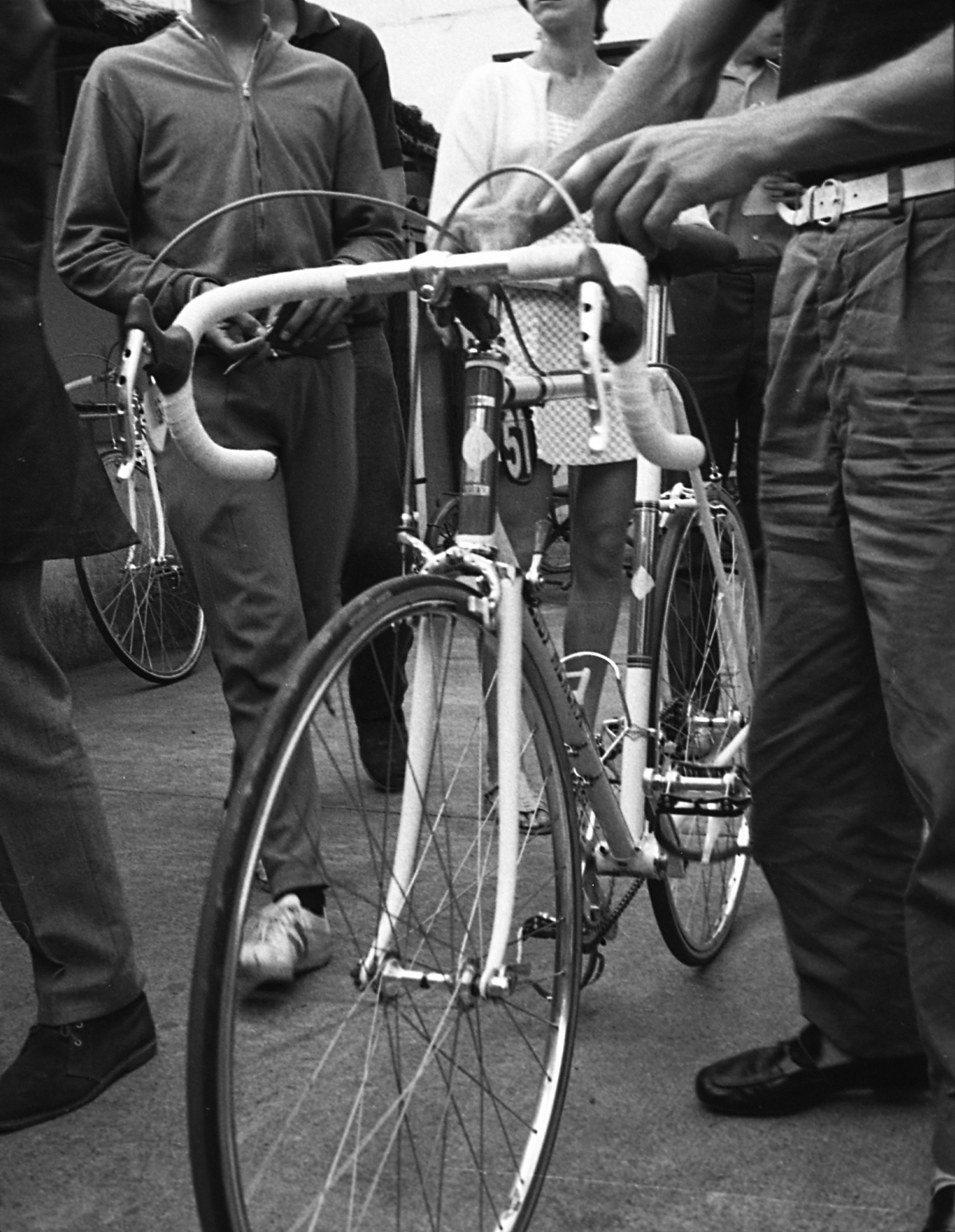
In the summer of 1969, Jef Geys decided to follow the Tour de France. A cycling enthusiast like many of his compatriots, the Belgian artist photographed the stages of what would become Eddy Merckx’s first victory. He created a series of photographs that juxtapose multiple realities—sociological, urban, ethnographic, and artistic. The images give equal attention to the cyclists, the fans, and the onlookers. Logos and advertisements in the stage cities form the symbolic literature of the event. The perspectives are those of the amateur, the true amateur—someone who, in a repetitive and rarely satisfied gesture, with no aesthetic agenda, embodying the purest critical stance, is a voyeur.
The 67 photographs are in black and white. Exhibited for the first time almost fifty years after their creation, they might carry a documentary or nostalgic value. But that would be overlooking the sharp nature of Jef Geys’s work, who for the occasion created “bolted” frames.
While July 20, 1969, marked Eddy Merckx’s first Tour de France victory, it was also the day of the first human steps on the Moon. On one side, a planetary and universal triumph; on the other, a national sports victory—placed on equal footing when one considers the emotional impact on a cycling-obsessed public for whom the Tour represents the ultimate achievement. A two-page spread from Belgian newspapers dated July 21 and 22, 1969, punctuates the exhibition, announcing both events on equal terms.
From his beginnings in 1958, Jef Geys gave a central place to photography. Followed in Belgium during the 1960s by artists like Jacques Charlier and Marcel Broodthaers, his early choice to work with photography made him a pioneer in the Belgian art world, aligning him with major figures of the international conceptual art scene such as Ed Ruscha, Robert Smithson, John Baldessari, and Douglas Huebler.
The exhibition at Les Bains-Douches reactivates a photographic series from an artist’s book entitled Al de zwart-wit foto’s tot 1998 (All the Black and White Photos Until 1998)—a 500-page volume of photographs (1958–1998) arranged randomly as contact sheets—presented here in a “fragmented” version. For Jef Geys, photographic and archival practices are inseparable. The archive of art and the art of the archive merge into a single practice when the artist claims the freedom to define his own notion of the artwork. Neither a unique piece, nor a multiple, nor a mere archive, for Geys there are only versions—translations of personal events into artistic form. Kome is the name he gives to much of his work; it means “work in multiple copies.” That’s why, for him, the value of a newspaper, a photograph, or a film is equal to that of a painting, a sculpture, or their accompanying descriptions.
This challenge to the standard notion of the artwork could lead him to photograph his paintings, catalog them on binder sheets, which then attain the status of artworks themselves; even the list of works might be exhibited.
Jef Geys approaches all the realities that make up his everyday environment without hierarchy—whether personal, cultural, or universal. He thus moves seamlessly across all possible media: drawing, painting, sculpture, language, photography, film, and even big data. This sharp awareness of producing an artistic language in daily life led him, as a schoolteacher, to translate the school curriculum into an artistic program, and, as a graphic designer, to use the local newspaper he worked on as a platform for his own work—eventually taking full control of it. In this way, KEMPENS Informatieblad, the local newspaper of his region, became the artistic support for his own research and reflections on his work, as well as the press outlet for his exhibitions instead of traditional catalogues.
A scientist recently defined willpower as the act of the arm lifting the very moment one wishes to raise it. Jef Geys’s work is a voluntary act, and his pieces are necessary objects. This is perhaps the secret of an oeuvre that is both radical—tolerating only necessary forms—and that only exists when it reveals the shared frequencies of life’s diverse realities. His work is also light and modest, a result of the existential lucidity that animates the artist. To perceive, to recognize, to capture—a trilogy of consciousness, commitment, and transmission that is undeniably present in his life and work.
So how should one read or comment on a work of direct action, which—unlike distanced commentary—draws from daily acts, more concretely rooted in his garden, his classroom, the newspaper he worked for, the bar he ran… and which concludes in a space far removed from art criticism or aesthetic theory: the realm of reprise, which—like in music—confirms and amplifies the reference?
Integrity is a peculiar thing: it can be sensed, tasted; one can recognize its roundness and fullness, but it is hard to comment on it without diminishing it. So simply remember, when visiting the exhibition Eddy Merckx’s 1969 Tour de France, the freedom you yourself have experienced in practicing a sport or a leisure activity, in identifying with your idol’s life, in being part of the crowd at races or matches—when the heads of fans are as much a part of the spectacle as the advertising language, the clothes, or the hairstyles of the participants.
As for the fascination Jef Geys’s work inspires in those who explore it, it probably stems from the artist’s reflective power. Artists, in Marcel Proust’s words, are those who, abruptly ceasing to live for themselves, make their personality a kind of mirror so their life can be reflected in it; “genius consisting in the reflective power and not in the intrinsic quality of the reflected spectacle.”